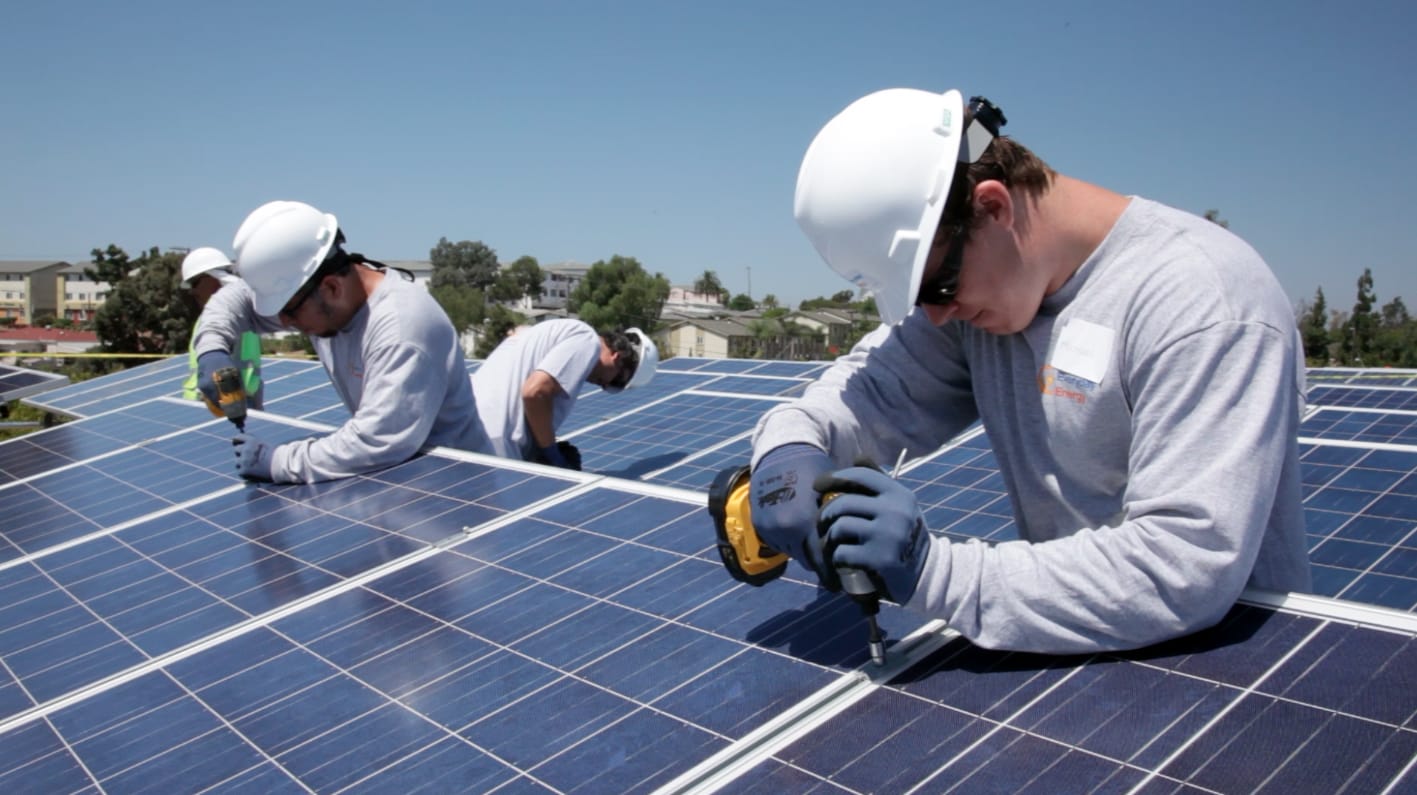Time to look at the wider benefits of solar to the MA economy
The solar industry in Massachusetts has been cranking away for nearly a decade and is on the verge of grinding to a halt. With solar’s future hanging in the balance, we should examine what the wider benefits of solar have been for the state.
The State’s main utilities, National Grid and Eversource, enjoy the monopolistic power in the territories that they control, and as such, whatever the price of electricity, they will ALWAYS make a profit. But what happens to the money that their customers pay them every month could have wider implications for the State’s economy.
Three scenarios for solar in the state’s future.
In the “do nothing” scenario, where solar is left to flounder, we’re going to see 15,000 people leaving the work force. Some may continue to reside in Massachusetts and pursue opportunities that demand their skills in neighboring States, like Rhode Island, Connecticut, and, most likely, New York. Others might have to move out of State in search of opportunities as far away as California. And others will need to leave the work force to re-train for a new industry altogether.
In that scenario, Massachusetts loses out. We lose workers, we lose renters, we lose customers, and we lose tax payers. These are respected jobs – electricians, carpenters, engineers – these are the people and skills we want in our state. A recent study found that the state has at least 15,000 employed by the solar industry, and those people earn at least $600 million annually. The broader energy efficiency industry has almost 100,000 employees – this is a full 2.5% of our Massachusetts workforce.

Aerial Photography
And note that the cascading effect of money in the economy – $600 million in lost payroll will likely have a ripple effect. Less people buying groceries means stores need fewer products on the shelves, fewer employees to help customers, and smaller deliveries from distributors. Economists have a term called ‘velocity of money’ – this describes how many times that $1 you spend will move through the economy. When a regular person spends $1 on food, or with an electrician, or fixing their car – that same dollar will be spent by vendors and suppliers further up the chain. That $600M loss will actually be closer to a $1.5B dollar loss to our economy.
Also in that scenario, Massachusetts rate payers will continue to struggle under the burden of some of the most expensive electric rates in the country. After meeting payroll, paying taxes, and, yes, reinvesting in repairs to our State’s aging infrastructure, lets ask, where does the rest of that money go? Out of state – and in the case of National Grid, out of country – and to their shareholders.
In the “do something” scenario, the solar sector of Massachusetts’ economy can continue to thrive. What it needs is movement in the states net-metering caps, to allow for larger-scale solar farms, which could be owned by the many residents who don’t have rooftops adequate for solar. This can be for any number of reasons – from tree cover or other rooftop obstructions, to the many condo dwellers whose HOA’s disallow on-premisis solar.
With the Pilgrim Nuclear Power Station scheduled to shutdown in a few years, the State is going to lose it’s biggest carbon-free electricity generator. Options for replacing that capacity are natural gas, with all of its CO2 implications or buying hydropower from Canada, which, while carbon neutral, would have the effect of sending Massachusetts’ dollars not just out of the state, but out of the country.
A third option that would keep as much of Massachusetts’ citizens money in the Massachusetts economy is to encourage battery-backed solar to fill that void. One of the biggest “gripes” against solar has been the fact that it is an “intermittent” power source, where panels only produce power when the sun is shining. Battery-backed solar solves that issue, and even better, the State is home to some promising battery companies (Aquion Energy that just won a $500,000 award from MIT for one).
We’ll need people who are smarter than me to figure this out, but what if an SREC-III program was designed that compensated owners based on their minimum hourly output over a 24-hour period? Utilities wouldn’t have to worry about net-metering any longer as homes and businesses would be able to use the power generated by their systems when they needed it, rather than send it on to their neighbors. By writing legislation that specifically promotes battery-backed solar, National Grid’s and Eversource’s suppliers could see much reduced load on their plants, alleviating the need to contemplate adding dirty generation sources to replace Pilgrim.
It could be a win-win for everyone. The utilities are going to have to invest in significant amounts of infrastructure to replace the shuttering of Pilgrim, and that money is going to come from Massachusetts rate-payers. With an SREC-III that specifically incentivizes battery-backed solar, that money would finance the next phase of the solar revolution, and revitalize an industry that’s about to come to a grinding halt.
It’s money that we’re going to have to spend anyways – why wouldn’t we want it spent keep existing jobs in the state, creating new jobs, support our local high-tech sector, reduce our carbon foot-print, and catapult Massachusetts ahead of California in leading the next phase of the solar revolution. I can’t think of anyone that would be opposed that isn’t in the pocket of one of a Big Utility.


